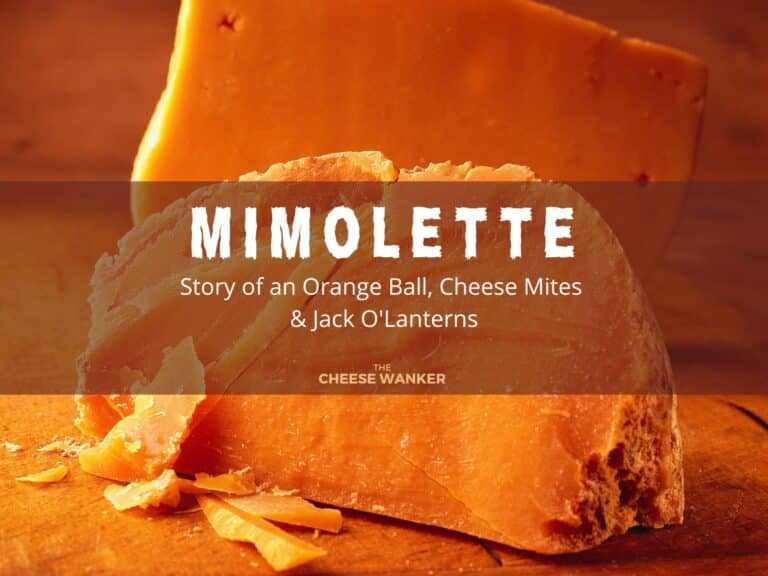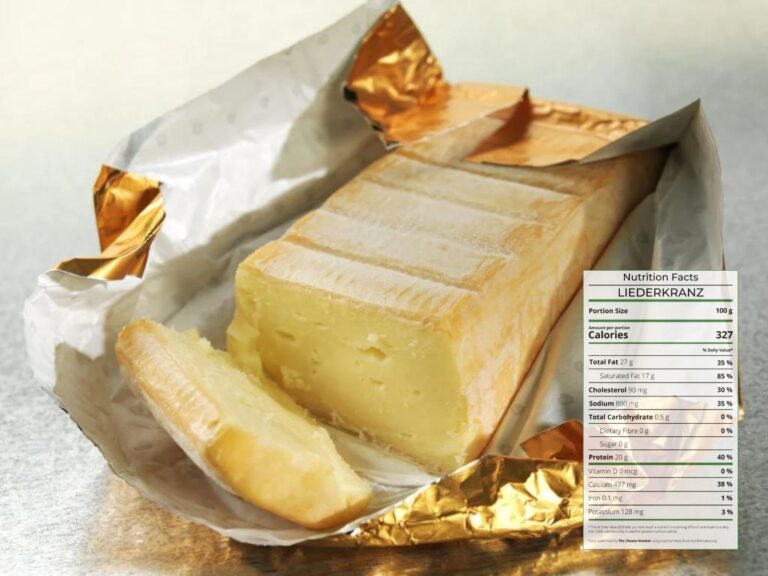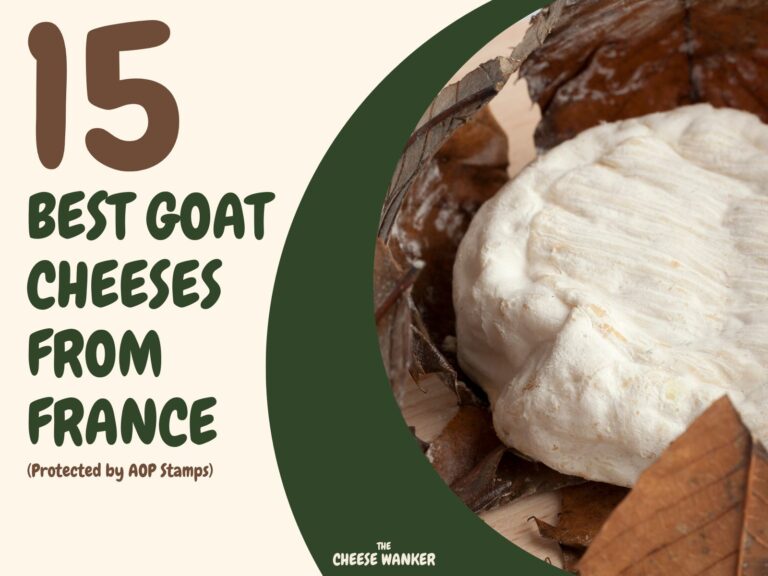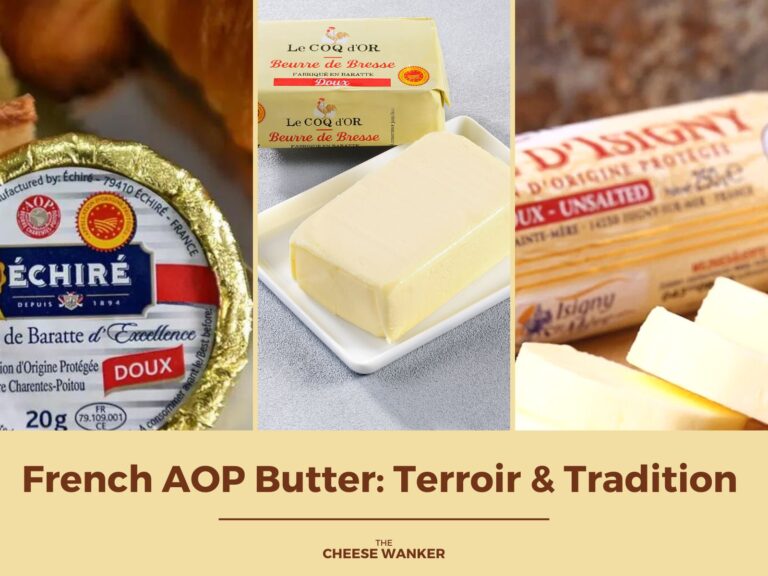Nestled in the picturesque Haute-Savoie region of the French Alps, Reblochon cheese is a true gem of French culinary heritage. This subtle washed rind cheese has captured the hearts and palates of cheese enthusiasts worldwide. In this blog post, we’ll take a journey through the fascinating world of Reblochon, uncovering its origins, unique characteristics and our best tips for savouring it.
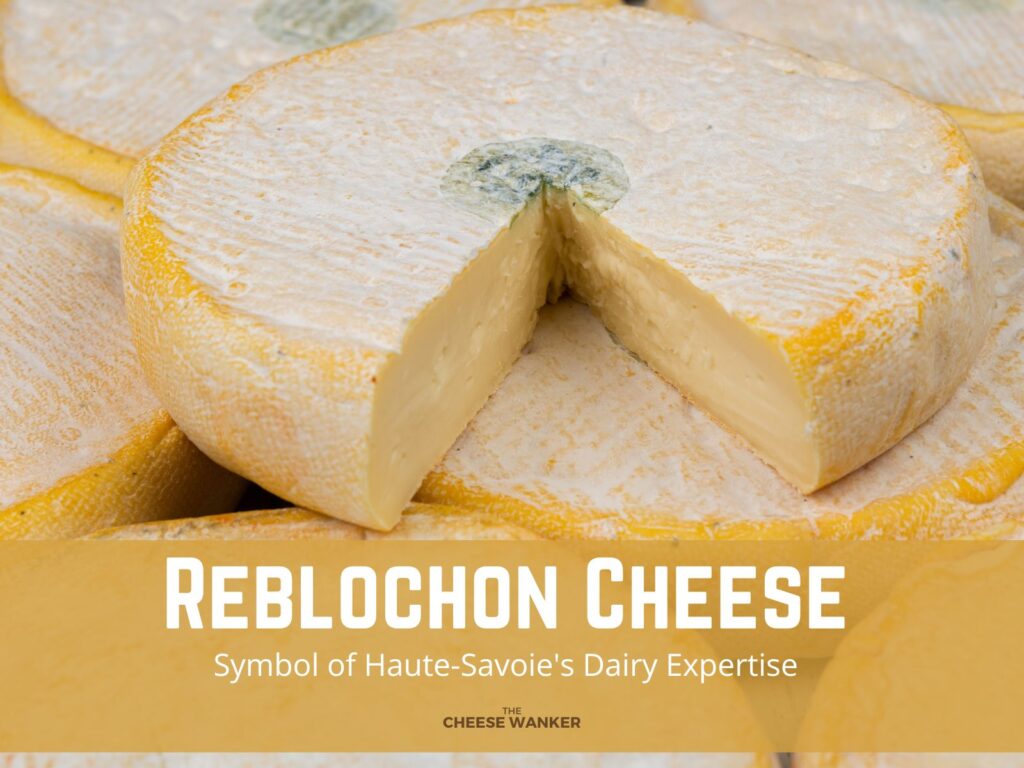
What is Reblochon?
Reblochon is a traditional cheese made from cow’s milk, renowned for its velvety texture and subtle creamy flavour. Its history is steeped in tradition and folklore, making it a true symbol of the Haute-Savoie region’s cheesemaking heritage.
This iconic French mountain cheese bears an AOP stamp (since 1996) that protects its origin, production and maturation. You can read more about the AOP and its efforts to protect historical cheeses around Europe in this post here.
Where does Reblochon come from?
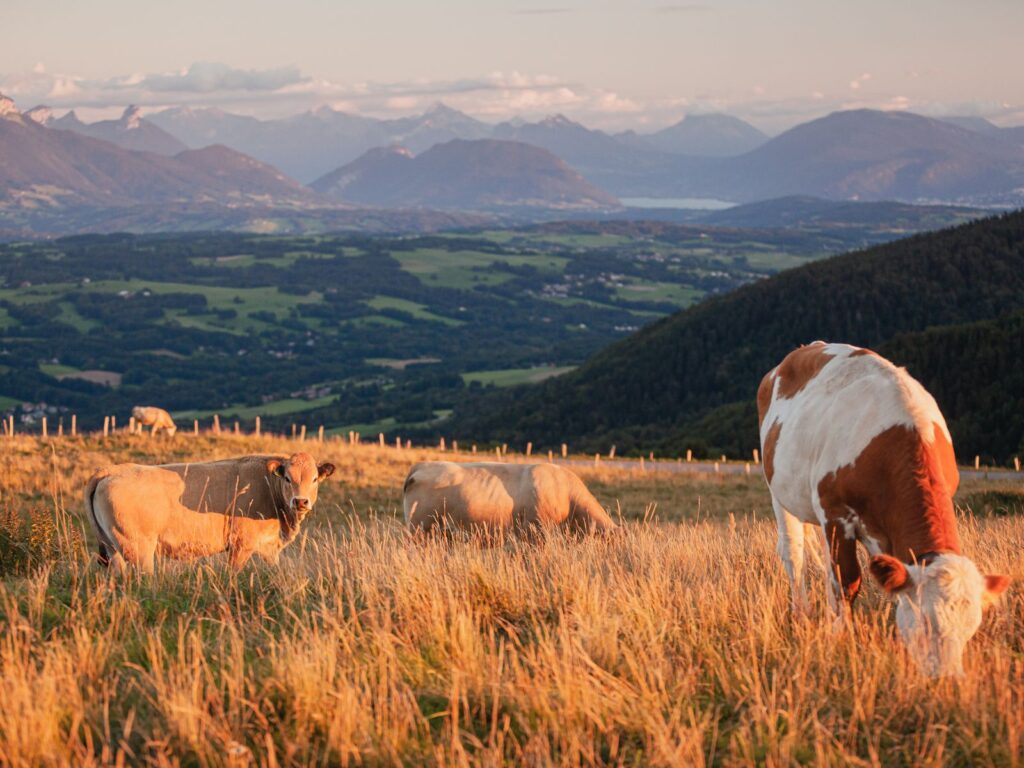
Authentic Reblochon cheese is exclusively crafted in the Haute-Savoie region of the French Alps. The zone of production is bound by Lake Geneva (Lac Léman) in the north, Annecy in the west and Chamonix in the east.
This region’s pristine mountain pastures and dairy farming traditions contribute to the cheese’s unique character and quality.
In the 19th century, the annual production of Reblochon was around 40 metric tonnes. However, thanks to the region’s appeal to winter sports afficionados, Reblochon’s popularity has sky-rocketed. Presently, cheesemakers in Haute Savoie make around 17 000 tonnes each year!
What does Reblochon mean?
The origin of Reblochon dates back to the 13th century in the Alpine valleys of Thônes. And it owes its existence to the cleverness of the local peasants who were then required to pay a tax to the monks and noble landowners.
This tax, collected once a year, was calculated based on the number of milk pots filled daily during milking to determine the quantity of cheese owed by the farmer.
In order to reduce their taxes, the peasants began practicing incomplete milking. Once the tax collector had left, they would perform a second milking after nightfall. This second milking was called “rebloche” from the verb “reblocher” which means “to milk a second time” in the local dialect.
The milk from this “rebloche“, although not abundant, was rich in cream and flavour allowing the farmers to produce a creamy cheese. And this cheese would eventually become known as Reblochon!
What type of cheese is Reblochon?
The making of Reblochon involves two traditional cheese technologies. Indeed, Reblochon is both a pressed uncooked cheese and a soft washed rind cheese. Furthermore, it is exclusively a raw milk cheese made with the milk of local cows.
We’ll tell you more about the production of this iconic French mountain cheese a little bit later.
Different types of Reblochon
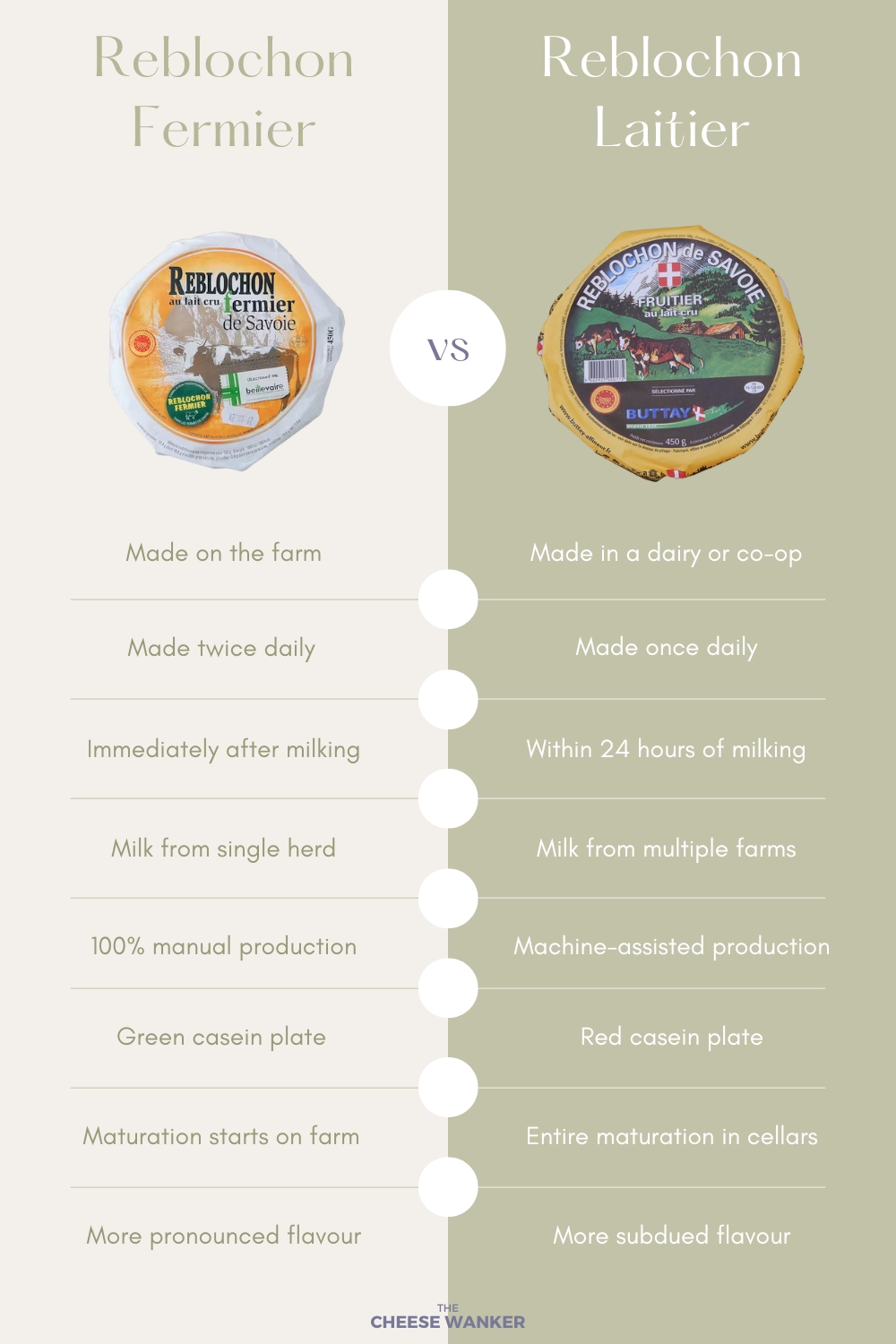
There are two main types of Reblochon available in France: “Fermier” and “Laitier”. Both offer exceptional flavours and textures, allowing cheese lovers to explore different facets of this French delicacy.
Reblochon Fermier (Green)
Our first type of Reblochon is the ultimate expression of terroir. Indeed, Reblochon Fermier is made on the farm where the milk is gathered.
The farmers milk their cows twice a day and immediately use this fresh, raw milk to make Reblochon. Since this is the only milk they use, Reblochon Fermier is a single herd cheese.
Moreover, every step of the production of this farmhouse cheese is done manually.
You can tell that you’re looking at a farmhouse Reblochon by the edible green casein plate on the flat part of the cheese.
Reblochon Laitier (Red)
While Reblochon Laitier is also made according to AOP regulations, it differs from the Fermier version in a few aspects. For starters, Reblochon Laitier is made by artisanal cheesemakers (not on the farm) or by co-ops called “Fruitières”.
Furthermore, cheesemaking takes place only once a day and uses a mixture of milks from several local farms. Typically, this takes place within 24 hours of milking and can involve mechanised processes.
While farmhouse Reblochon wears a green plate, Reblochon Laitier is identified by a red casein plate.
How is Reblochon made?
The making of Reblochon cheese is a meticulous and time-honoured process that has been perfected over generations in the Savoie region of the French Alps.
1. Selection of cows and milk
Of course, it all begins with the milk. The AOP dictates that the milk used in Reblochon production must come from the Abondance, Montbéliarde or Tarine cow breeds.
As a matter of fact, those three breeds are known for their ability to thrive in the mountainous terrain and produce rich, flavourful milk. Moreover, they graze on diverse vegetation, which imparts unique terroir characteristics to their milk.
2. Milk handling
To make Reblochon, cheesemakers have to use raw whole milk. Throughout the entire manufacturing process, the milk undergoes no heat treatment exceeding 37°C. Indeed, it is neither cooked nor pasteurised.
On average, it takes four litres of raw milk to produce a 500-gram Reblochon.
3a. Farmhouse cheesemaking
On the farm, the milk is coagulated immediately after each milking, which occurs twice a day. The farmer/cheesemaker then cuts the resulting curds and hand-presses them into moulds.
Each mould is lined with a fine linen cloth and the cheesemaker regularly flips each cheese several times.
To clearly identify their cheese as “Fermier”, the farmers then place a green, numbered casein plate on the flat part of each cheese. The casein plate also contains information about the farm and the family that owns it.
3b. Dairy cheesemaking (Laitier or Fruitière)
In the cheese cooperative (“Fruitière”), the cheesemaker receives delivery of chilled milk from several farms. They pour all the milk into the dairy’s vats and warm it to approximately 37°C.
Then, the cheesemaker adds natural rennet to form the curd, which they later cut using a curd cutter. The curd grains are then transferred into moulds for draining and shaping.
Next, the cheesemaker places a red casein plate that identities the cheese as a Reblochon Laitier. The cheese is then pressed to complete draining and remove excess whey. It is turned during pressing, then removed from the moulds and salted.
Finally, the maker transfers all the cheeses to a drying room at a temperature of 16°C to 18°C for four days.
4. Affinage
A Reblochon Fermier spends a minimum of eight days on the farm before being transferred to an affineur, who continues the cheese maturation process.
This involves regularly turning and brushing each cheese with a brine solution. During this maturation process, the cheeses rest on spruce planks.
As for “Laitier” versions, the Reblochon cheese is transferred to ageing cellars for a minimum of fifteen days, during which it is regularly washed and turned.
Organoleptic properties of Reblochon
According to the AOP, each cheese measures between 13-14 cm in diameter, 2-3 cm in thickness and weighs between 450 and 550 g. As the cheese ages, its thin light-cream rind bulges slightly on the sides.
Your nose will be greeted by inviting aromas of violets, wild thyme and alpine wildflowers coming from the raw milk. Despite being a washed rind cheese, Reblochon’s aroma is far from the robustness associated with cheeses like Epoisses and Maroilles.
As for its flavour, you can expect subtle notes of fresh cream and hazelnut. Unsurprisingly, those flavours tend to be more pronounced in the farmhouse versions of the cheese.
Overall, Reblochon boasts a creamy, smooth and supple texture that contrasts beautifully with its thin, crunchy orangey-yellow rind.
Serving guide for Reblochon
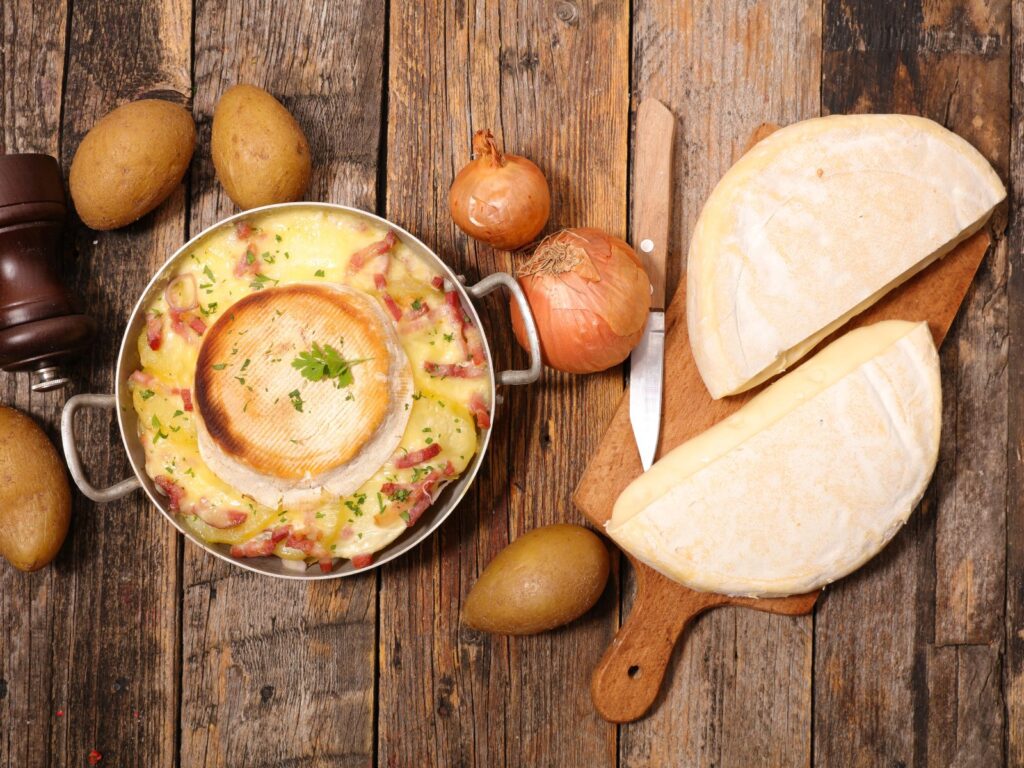
Savouring Reblochon is an art in itself. To experience its full glory, serve it at room temperature. Pair it with fresh crusty bread, grapes, or apples.
Of course, Reblochon is a star ingredient in the beloved French dish “Tartiflette”, where it’s melted over potatoes, onions and bacon for a truly indulgent experience.
Whether you’re serving Reblochon on a platter or in Tartiflette, there are some great local wines from Savoie that you can pair with. Look out for Roussette de Savoie and Saint Péray if you prefer white wine. Or IGP Collines Rhodaniennes and AOP Savoie Arbin for more complex reds.
You can discover our list of the best red wines to pair with cheese here.
Availability outside of France
Because it is made with raw milk and matured for less than 40 days, Reblochon is banned in the USA and in Australia. Astonishing right?
But the good news is that you can find Reblochon de Savoie on the shelves of specialty grocers all around Europe, in Canada and even in some Asian and African countries.
Alternatives to Reblochon
Since Reblochon cannot be found in the United States or in Australia, we’ve got some decent pasteurised versions for you.
- Délice du Jura: Inspired by Reblochon, this French cheese crafted from pasteurised cow’s milk. This exquisite cheese undergoes a delightful transformation as it matures, becoming increasingly creamy and indulgent.
- Préféré des Nos Montagnes: This is another pasteurised milk version of Reblochon that is available throughout Australia and some parts of Asia.
- Mountain Man: This is our pick of the lot. Made by French cheesemaker Mathieu Megard in Victoria, Australia, this Reblochon-inspired cheese might just be the one that is closest to the real deal!
Conclusion
Reblochon cheese is a testament to the rich history and artisanal traditions of the Haute-Savoie region. Its velvety texture, creamy flavour and captivating aroma make it a cherished component of French cuisine.
Whether enjoyed on its own or as part of a sumptuous dish like Tartiflette, Reblochon invites you to savour the authentic flavours of the French Alps and experience a taste of history with every bite.
So, if you’re ready to embark on a culinary adventure, Reblochon cheese is your passport to the heart of the Alps.
